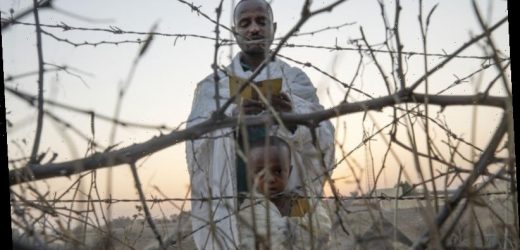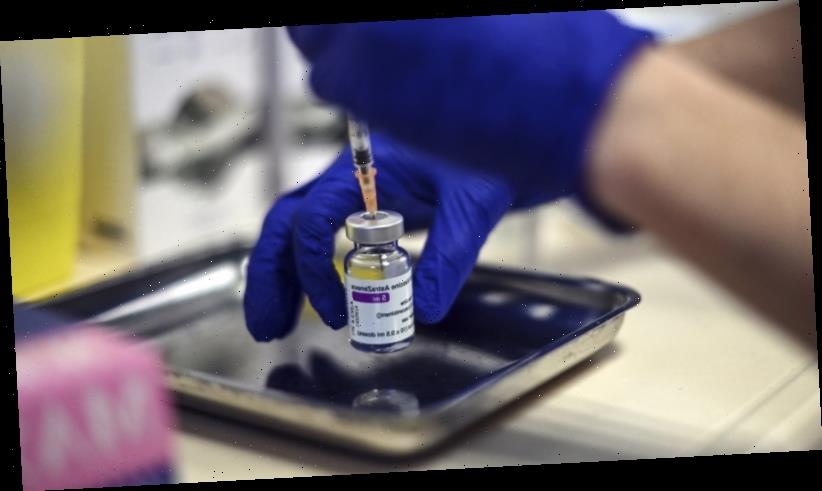Beirut: The shootings began after lunch.
It was Friday, January 8, the day after Genna, the Ethiopian Orthodox Christmas. Around 2pm, Kidane Tesfay heard gunshots near his family’s home and thought of his two brothers, ages 17 and 20, walking outside.
“When I looked through the door’s peephole, I saw them on the ground, their blood spilling out,” he said in an interview. He also saw soldiers wearing mud-flecked green camouflage gear striding up to the door.
Tigrayan refugees who fled the conflict in the Ethiopia’s Tigray at Hamdeyat Transition Centre near the Sudan-Ethiopia border, eastern Sudan.Credit:AP
“I had to escape,” Tesfay said. “Luckily our house has another entrance. I ran out the back.”
What followed was an hourslong killing spree, according to accounts from 10 survivors, including Tesfay, as well as from victims’ relatives and friends and activist groups. Ethiopian soldiers went from house to house in Bora, a town in Ethiopia’s northern Tigray region, and executed more than 160 people.
Done killing, the soldiers stopped families from taking their dead. Only on Sunday – two days after the slaughter – were gravediggers allowed to set about their grim task; one of them buried 26 corpses in the graveyard of the Abune Aregawi Church, survivors said.
Agere Getnet weeps in front of a tomb containing the remains of her husband, Tebekaw, 37, hisbrother, Alie Abere, and his nephew, Aynew Mulat, among the mass graves at Abune Aregawi Ethiopian Orthodox Church.Credit:Getty
“The town was filled with corpses. The bodies of our friends and neighbours started to smell,” said Girmay Hagos, a 30-year-old real estate agent and survivor. “We kept our grief to ourselves – the soldiers didn’t allow us to cry.”
The massacre in Bora is another deep stain on Prime Minister Abiy Ahmed’s monthslong war in Ethiopia’s northern Tigray region, which began in early November after the ruling faction there, the Tigray People’s Liberation Front, or TPLF, attacked a government military base. Abiy retaliated with what he called a “law enforcement operation,” which killed tens of thousands of people, estimates say, and displaced hundreds of thousands more. More than 60,000 Tigrayans have fled to neighbouring Sudan alone, according to the International Organisation for Migration.
Behind those numbers has been a brutal, ethnically driven campaign of punishment against the 5.4 million people living in Tigray and the TPLF, which had ruled Africa’s second-most populous country for almost three decades before Abiy’s ascension to power in 2018.
Much of the war remains opaque because the government imposed a communications blackout on November 4, largely sealing Tigray from the wider world. Still, consistent reports have emerged in recent weeks of “extrajudicial killings, sexual violence, looting of property, mass executions and impeded humanitarian access,” the UN’s Special Adviser on the Prevention of Genocide said in a statement last month.
On Monday, medical charity Doctors Without Borders said that 70 per cent of clinics it visited in Tigray “were looted, vandalised and destroyed in a deliberate and generalised manner”. Last week, US Secretary of State Antony Blinken told a House Foreign Affairs Committee hearing that government forces – which include the Ethiopian army, soldiers from neighbouring Eritrea and state-sponsored militiamen from the Amhara region – had committed acts of “ethnic cleansing”.
In this photo released by Medecins Sans Frontieres, a looted room is seen in the Sebeya health center in the Tigray region of northern Ethiopia on February 25, 2021. Credit:Medecins Sans Frontiers
Ethiopia has rejected all accusations, and there has been little international intervention, diplomatic or otherwise. In a statement on Saturday responding to Blinken’s comments, the Ethiopian foreign ministry said that “nothing during or after the end of the main law-enforcement operation in Tigray can be identified or defined by any standards as a targeted, intentional ethnic cleansing against anyone in the region”.
Mulu Nega, the chief executive of Tigray’s transitional government, did not respond to requests for comment. Daniel Bekele, who heads the government’s human rights commission, declined to talk about the massacre in Bora.
The conflict has transformed Abiy’s image from Nobel Prize-winning peacemaker – he forged a landmark deal resolving a yearslong conflict with neighbouring Eritrea in 2019 – into that of a ruthless leader cynically using the peace accord to make war, alongside Eritrea, against a common enemy in Tigray. Meanwhile, his country is staggering under a mountain of debt, and tensions with Sudan and Egypt are high over the Grand Ethiopian Renaissance Dam, which Ethiopia built over the Blue Nile but which countries downstream consider an existential threat.
Ethiopia’s Prime Minister Abiy Ahmed Credit:AP
By November 26, pro-Ethiopian government forces had scythed through southern Tigray, including Bora. A few days later, Abiy declared the end of the military operation, with the government taking full control of the region and insisting that no civilians had been harmed.
But skirmishes continued for weeks in rural areas of Tigray.
All the witnesses interviewed for this story insisted that the TPLF had no presence in the area after November 26, and that there had been no provocation or warning before the soldiers began their rampage.
“Farmers. Farmers and youngsters,” one woman says over and over as she cries over the body of a family member in a video provided by Seb Hidri, an NGO in Tigray that supports Tigray’s independence. Corpses of men wearing civilian clothes lie strewn on the ground, one in a pool of blood, as other women shout and weep.
Local sources said the accents of the women, their clothing and the terrain in the video are consistent with its having been filmed either in or near Bora, but the Los Angeles Times could not independently verify the footage.
Guiomar Pau Sole, spokeswoman for the United Nation’s regional Office for the Coordination of Humanitarian Affairs in Nairobi, said the UN had received “alarming reports of civilians being injured and killed during fighting in rural areas of Tigray, and violations against civilians, including sexual violence”.
An Orthodox Christian Tigrayan refugee who fled the conflict in the Ethiopia’s Tigray region reads prayers with his son in front of a church at the Hamdeyat Transition Center near the Sudan-Ethiopia border, eastern Sudan.Credit:AP
“However, the verification of this information was, and remains, extremely challenging,” Pau Sole said.
On Wednesday, the UN’s human rights chief, Michelle Bachelet, agreed to a request by the government’s human rights commission for for a joint investigation in Tigray.
Los Angeles Times
What in the World
A note direct from our foreign correspondents about what’s making headlines around the world. Sign up for our weekly newsletter here.
Most Viewed in World
From our partners
Source: Read Full Article







